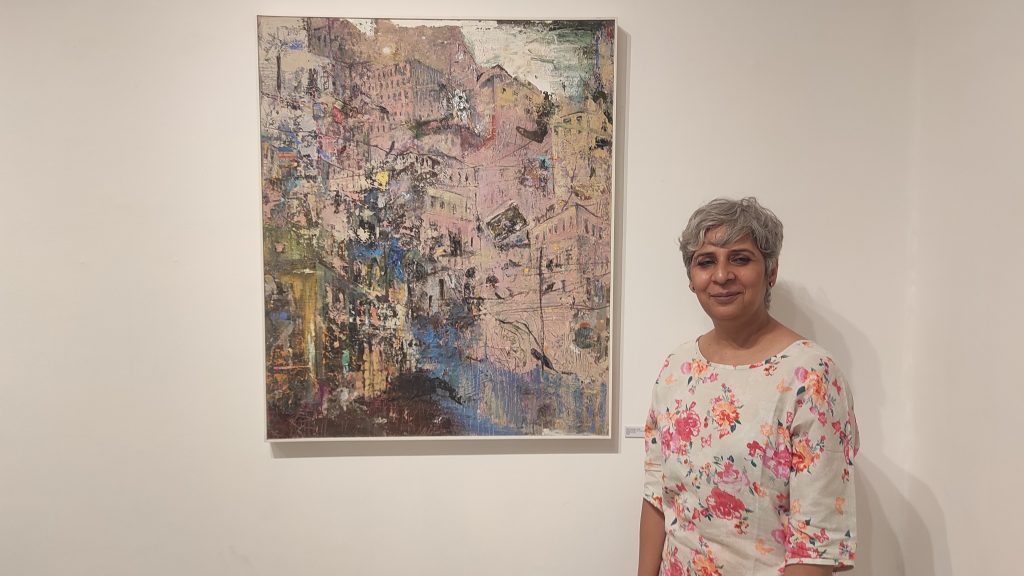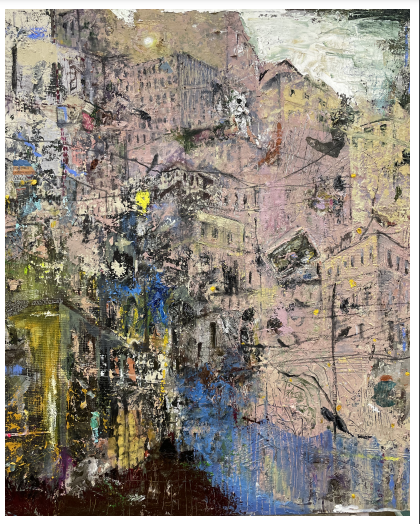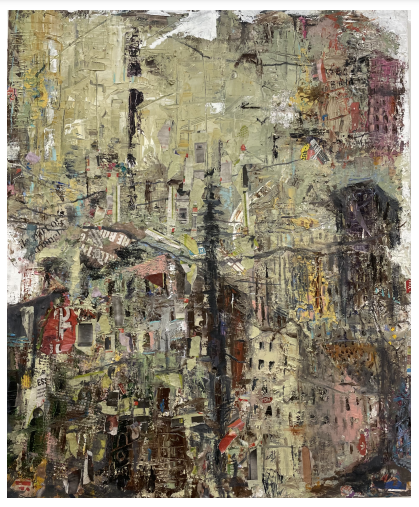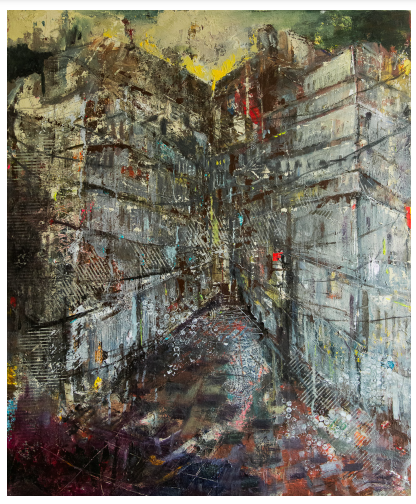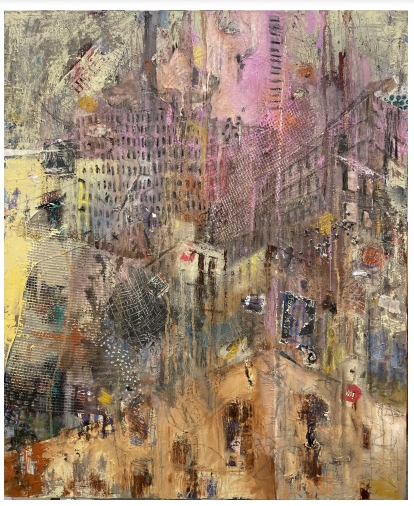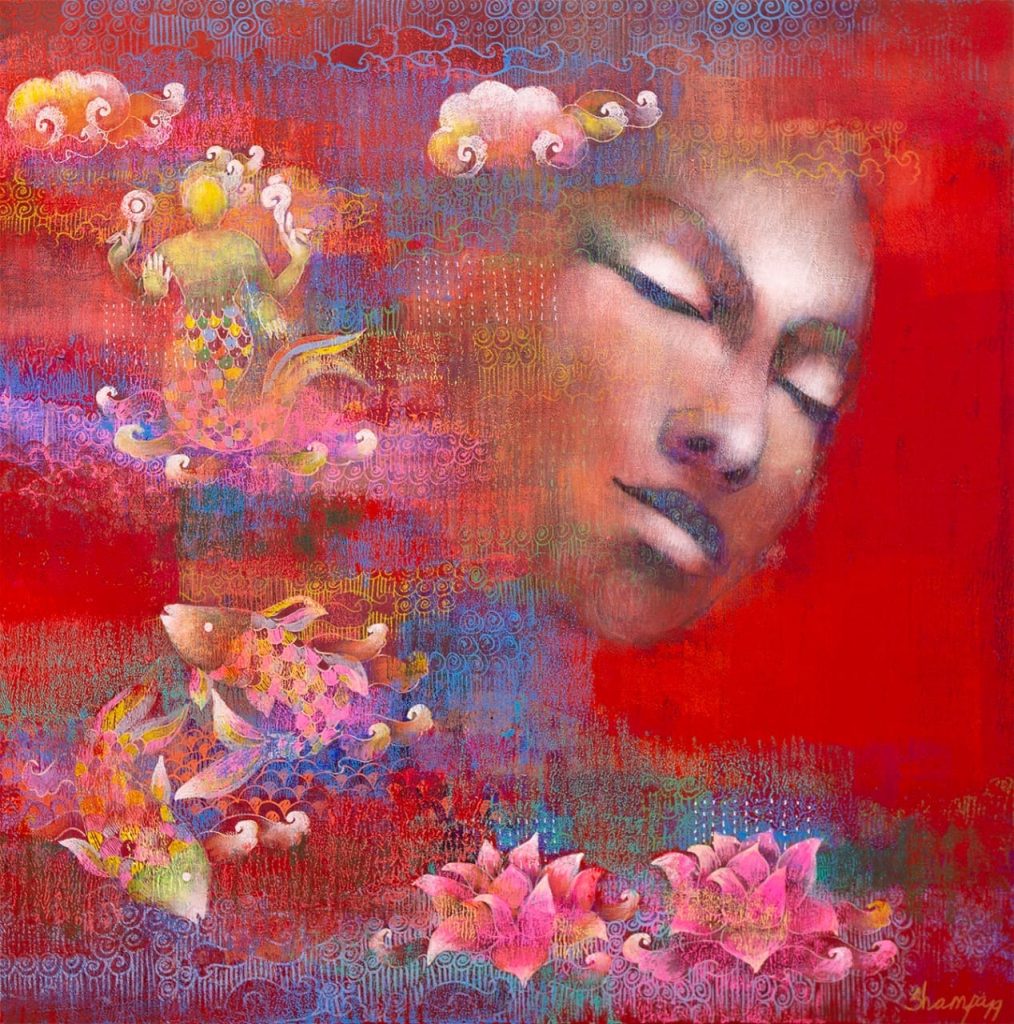Recently, the captivating exhibition “Urban Chaos” came to a conclusion at Triveni Kala Sangam. This extraordinary display showcased artworks that explored the intriguingly distorted and illusionary images of Delhi’s bustling streets and architectural structures, allowing us to glimpse a hidden world that often eludes our everyday perception. Artist Simmi Khanna incorporates everyday life elements into her work, resulting in a captivating and relatable world. With her unique approach, she masterfully weaves together narratives that deeply resonate with our personal experiences, creating an intricate bond that goes beyond the mere depiction of physical spaces, but also touches upon the interconnected memories they evoke. This work offers a unique opportunity to truly enrich the delight of engaging with artistic pieces, evoking a profound sense of intellectual fulfilment as you delve into the immersive experience of inhabiting a specific setting. Simmi Khanna’s strokes create an illusion of a space that constructs its realms without the use of lines or shapes. The core of this artwork has been established by embedding extensive strokes of different colors, without relying on any geometric shapes. The intelligent application of colours gives one a view of diving deep into the crowded and shattered structures of Delhi. Simmi’s focus was on the cerebral connection with the work as there are hardly any figurative elements in the works. The artworks inspire individuals to transcend the boundaries of their current existence and compel them to ponder their abstract connection with places.
Staff Quarters, Image Courtesy: Simmi Khanna
Simmi shared her process, “I have been painting for the last nine years. Since 2013 I’ve been painting at Triveni, so I was doing different kinds of work experimenting as well. These works are from the last one and a half years. I do a lot of portraiture and other things. Then I was experimenting with different materials, and compositions, wondering what to make. I was fascinated by the small lanes of the places I travelled to. I’ve been extensively to Moradabad and Firozabad. Furthermore, let’s not forget about the vibrant lanes of Delhi. I quite like those small narrow lanes of Delhi and love watching how people live in those places. That’s what I wanted to capture on the canvas. These are abstracts but not exactly abstracts as I gave them a structure and the names I’ve given them were not thought of. So these places weren’t thought of when I was painting them it was only when I finished my paintings that I decided to exhibit them. It’s my first solo exhibition, so when I had to put these up here for the exhibition, I had to name them, and I was wondering how to go about it. Because these are places and these could be anywhere in India, or Delhi, or anywhere so why don’t I name these after the places in Delhi? That’s the fascinating story behind the origin of names. I couldn’t help but draw allegorical connections between the places in my mind and the images depicted in the painting. It’s truly captivating to explore the hidden meaning within both the written and visual elements here. So for example, these are called staff quarters, Lodhi, or kinari bazaar. It looks like congested markets and covered with wires; if you’re up close to these paintings you see a lot of pasting and mish-mash of colours, strokes, and things pasted. But, when you step back you’ll get the perspective, and you’ll start seeing things. And I left it abstract so that people come up with their experiences, their own memories, and imaginations. They can find something personal in these paintings.”
Bhagirath Palace. Image Courtesy: Simmi Khanna
When asked about the chaotic elements in the works, Simmi responded, “There’s a lot of chaos, I’ve posted a lot of things, there are numerous strokes that are going in any direction, and if you step back you’ll see certain order, you’ll start finding some buildings, and they are looking like objects or people or buildings, whatever. It does come out, and you’ll see a lot of chaos over there. The strokes and the way the colour has been applied, I haven’t drawn any lines, but there’s an urbanscape over there. So, that was also the thought process behind these paintings.”
Kinari Bazaar. Image Courtesy: Simmi Khanna
When asked about the embedded distortions in the works, Simmi answered, “I didn’t deliberately create those distortions, it just happened that I put colours as I wish and then created some strokes that give some kind of illusion of shapes or a place. The process has been very spontaneous wherever I felt placing those things or if wanted to draw. These are mixed media works, and it’s more about things we find around us, I’ve even added an ATM card in one of the paintings. So these are the things we find around us. People make beautiful mountains, lakes, trees, rivers, and seascapes but these are not around us, we live in Delhi, and seeing these structures is common for us. That’s what I wanted to bring out. I used scraps of newspapers with texts written on them, and they look like signboards to some, and sometimes they give an illusion of a window or a door. So it has been very organic it’s not like I’ve planned it. It was only during the finishing stages that I started out with some forms and left certain forms to the imagination of the viewers. My sole focus was on establishing these structures in and around Delhi in an abstract way.”
Andha Mughal, Dilli 7. Image Courtesy: Simmi Khanna
Read Also:

Contributor

